
Riders of all ages will agree that leads and lead changes are one of the trickiest parts about jumping coursework. Even if you're great at finding your distances and keeping your horse or pony balanced at the jumps, it can be difficult to stay organized without having him on the proper lead. Lead changes are also an important part of dressage tests and equitation and reining patterns.
FEEL YOUR LEAD
The first step to being successful with your lead changes is to be able to identify when you are on the wrong lead. Start by looking at your horse's inside shoulder the same way you would look at the outside shoulder for your diagonal. In the same way, you're looking for the leg that is reaching farther forward than the other. You may need to compare both of your horse's shoulders to see the difference, which is totally fine.
From there, the next step is to practice feeling the lead you're on without looking down. With your seat in the saddle, you'll feel the canter stride moving like a wave underneath you. On the correct lead, the wave will start with the outside hind leg and end in the inside front leg. On the wrong lead, the wave will start with the inside hind leg and end in the outside front leg.
Within a few strides on the wrong lead, you should be able to feel that your horse is unbalanced. It may even feel like he is pushing himself away from the arena fence.
Bu hikaye Young Rider dergisinin January-February 2024 sayısından alınmıştır.
Start your 7-day Magzter GOLD free trial to access thousands of curated premium stories, and 9,000+ magazines and newspapers.
Already a subscriber ? Giriş Yap
Bu hikaye Young Rider dergisinin January-February 2024 sayısından alınmıştır.
Start your 7-day Magzter GOLD free trial to access thousands of curated premium stories, and 9,000+ magazines and newspapers.
Already a subscriber? Giriş Yap

The MORGAN
The Morgan can do any equestrian sport while also having the personality of a family pet.

LEFT ALONE
Stacy Westfall's orphaned foal thrives by finding a friend.

Wild Rose Trainers
Young trainers and Mustangs learn from each other in a unique program.

HAPPY CAMPERS
Now is the time to find the perfect horse camp for the summer.
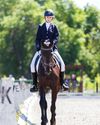
Dressage Details
Achieve better harmony with your horse using dressage training.
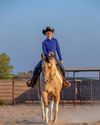
Side to Side
Position yourself for a perfect sidepass.
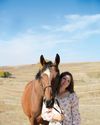
MY BUSINESS JOURNEY
Emma wanted to give her riding outfits a colorful touch, and ended up launching a successful belt business.
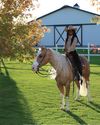
A Heart to Serve
Cavannah Hansen uses her talents and horses to help others in a variety of ways.
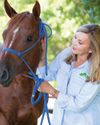
Animal Behaviorist
Are you interested in helping improve horse or pet interactions with their owners? This may be the career path for you.

SIX THINGS YOU DON'T KNOW ABOUT ME
Esme shares some secrets as to why this major YouTube star isn't so different from you and me.